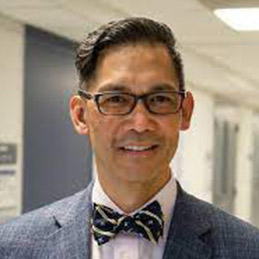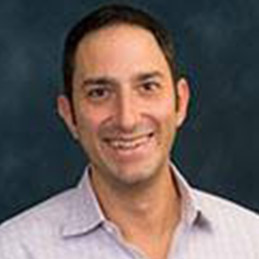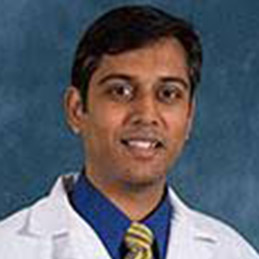Collaboration Stories
The purpose of this series is to tell the story of long-lasting and emergent stories of collaboration among clinicians/content experts and methodologists/AI experts, who have successfully worked on joint projects at the intersection of AI and health. Such collaborations are at the heart of e-HAIL’s mission, and we offer these stories as a way of inspiring collaboration in other researchers.
“We Aim to Integrate Machine Learning/AI and Healthcare in Order to Have Real and Lasting Impact”

Jenna Wiens, Ph.D.
Associate Professor, Electrical Engineering and Computer Science
College of Engineering

Vince Young, M.D., Ph.D.
William Henry Fitzbutler Collegiate Professor
Internal Medicine/Division of Infectious Diseases
Professor
Microbiology & Immunology

Patrick Schloss, Ph.D.
Professor
Microbiology & Immunology

Evan Snitkin, Ph.D.
Associate Professor
Microbiology & Immunology

Krishna Rao, M.D.
Associate Professor
Infectious Disease Clinic
This month, we talked to Jenna Wiens, one of e-HAIL’s advisory conveners, who maintains an extensive network of clinical collaborations at U-M and beyond. Her main advice for others wanting to get involved in multidisciplinary research: “Ask a research question that will lead to contributions across multiple fields.”
Wiens, an Associate Professor in the division of Computer Science and Engineering, has numerous clinical collaborations at Michigan Medicine, some of them stretching back several years. Soon after joining U-M, she got connected with a team of infectious disease experts, whose research focused on C. difficile. C. difficile is an aggressive, gut-infecting bacteria that causes diarrhea and colitis, which may result in hospitalization and even death. Wiens’ dissertation research had been on machine learning that can predict a patient’s risk of developing C. difficile, so it was a perfect match to become involved with C. difficile experts at U-M, including Vince Young, Patrick Schloss, Evan Snitken, and Krishna Rao. Together, the team submitted a large grant proposal to the NIH to study C. difficile; this funding has supported the group’s work since 2016, with new projects and collaborations continuing to be added.
The initial C. difficile collaboration is still ongoing today. Wiens and her team are currently working on a project to integrate the AI tool they built into clinical care routines at Michigan Medicine. Wiens notes: “As a computer scientist, it is gratifying to have the type of impact where something you and your team built is driving clinical care decisions at the bedside. That only happens with multidisciplinary collaborations, and takes the involvement of a broad range of stakeholders, including infectious disease researchers, nurses, hospitalists, experts in antimicrobial stewardship, people in patient education and the clinical intelligence committee. The C. difficile project has the greatest number of stakeholders of any project that I’ve worked on to date.”
Large collaborations involving multiple kinds of expertise and stakeholders take time and ongoing commitment from researchers–and lots of meetings. Wiens explains that weekly meetings are a cornerstone of the collaboration. “We meet every week for an hour to discuss, and we’ve been meeting for years now, pulling in different collaborators and expertise as the project evolves. This is how we get work done: through frequent communication.”
Regular meetings are important because researchers from different disciplinary backgrounds need to learn to speak each other’s language in order to get on the same page and work together effectively. An underappreciated aspect of “getting on the same page,” according to Wiens, is to make sure that all partners understand the shared vision. She highlights some of the key questions successful collaborators ask: “Are we going after the same thing? What are each of our incentives? How do those align? As a professor in CoE, I’m interested in advancing computer science and artificial intelligence, while my clinical colleagues are interested in advancing health care. So you have to find out what problems and solutions align.”
Wiens stresses the importance of having a shared vision that all collaborators can agree on, and articulating this vision from the very onset of the collaboration. To clarify the clinical goals, she asks her collaborators: “If I gave you a tool tomorrow that could predict the outcome of interest with 100% certainty and 100% accuracy, what would it change? What would you do with it?” She has learned that asking those questions upfront helps ensure that the project starts from a strong foundation. There is a clear sense of what the problem is that the team is trying to solve, and why this is important.
From the Engineering side, it is also important to select problems that require new techniques and new solutions. This “dual perspective” of advancing both healthcare as well as methodology is also central to e-HAIL. Wiens is interested in cases where off the shelf techniques fail, and current technologies are not enough. She notes that there are also many contexts in which existing technologies are in fact sufficient. She found herself in many meetings during her first year at U-M where she had to say, “No, you don’t need machine learning, or if you do, you can use this off the shelf tool. Existing techniques will solve this problem.”
Misunderstandings or communication breakdowns are inevitable in any long-term collaboration. Asked for an example, Wiens notes that it is often silly, little things like acronyms. “For example, in a recent meeting one of the clinical experts was talking about RPMs. As an engineer, RPM means revolutions per minute, which didn’t make sense in this context. Turns out he was talking about remote patient monitoring, RPM. Little things like that come up all the time, and I think you have to put your ego aside, admit you don’t know when you don’t know something and ask questions. This goes both ways: the people I work with also aren’t afraid to ask me questions when I’m going off in a very technical direction and losing half the people in the room.”
It is clear to Wiens and her many clinical collaborators that multidisciplinary research projects are the only way to actually solve the challenges in health care. “The problems are so big that not one person, or even a pair of people, can address them on their own; you need collaborators from many different disciplines, you need multiple perspectives.”
Wiens recounts that her understanding of collaborative research at the intersection of AI and health has evolved over the years. “When I first started, I thought that machine learning was going to change health care, and that cool ML was at least 90% of the project. Like many computer scientists I assumed that you really just needed the right algorithm.” Wiens stresses that for computer scientists to “throw tools over the fence into the health system” is not a viable approach, as researchers working without an understanding of the hospital context easily end up solving problems that aren’t really problems. Conversely, clinicians just throwing data back to computer scientists isn’t helpful either. According to Wiens, the goal of interdisciplinary collaborations that are inspired by real use cases and based on extensive understanding of the full context of the problem is not to “deploy” AI tools. “We aim to integrate machine learning/AI and healthcare, in order to have real and lasting impact.”
Asked for some final “tips and tricks” for other researchers who want to be successful in interdisciplinary collaborative research, Wiens advises junior faculty to take full advantage of the opportunity to give invited talks, especially internally. “Such talks are a great way to get your work out there and publicize your expertise to many people at once, and that’s how a lot of projects and collaborations get started. Whether someone comes to a talk that I’m giving, or I attend a talk that someone else is giving, those are occasions that spark new ideas. So my advice would be: say yes to giving talks, and also go to talks.”

 MENU
MENU 
